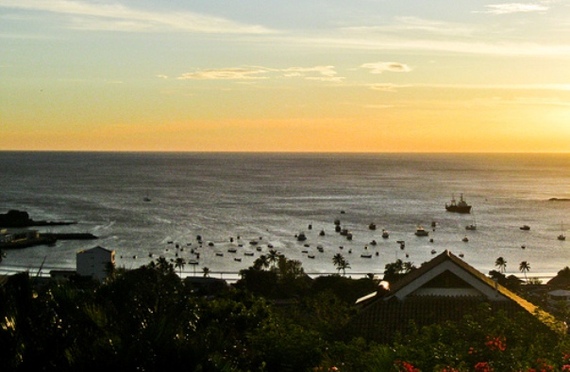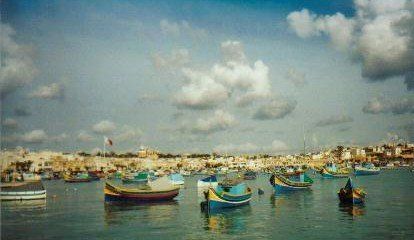This article comes to us courtesy of InternationalLiving.com, the world's leading authority on how to live, work, invest, travel, and retire better overseas.
"When you move overseas it's the perfect opportunity to reinvent yourself. You can adopt a new lifestyle and totally change what you do for a living," says Virginia native Lee Greenberg. The 39-year-old embraced this philosophy wholeheartedly when he moved to San Juan del Sur, Nicaragua, six years ago.
A former video technician who used to spend long hours at a stressful job, Lee is now a freelance consultant doing a little bit of everything, putting his expat experience to work. His biggest business is advising people how to build eco-friendly homes out of shipping containers, throwing in alternative-energy systems, like solar panels, if they're interested. He's also the go-to guy in San Juan when expats and business owners have computer trouble. And he helps fellow expats transition to life in Nicaragua, taking on tasks from handling government paperwork to purchasing and developing land. (See more at this website.)
He keeps busy but makes his own schedule. And he's finally doing work he's passionate about. "I enjoy helping people. I like that I don't fall into a boring, work-related routine. Today I am paying taxes for my clients, tomorrow I am working on a solar power system for another client," says Lee. "I'm happier and have no plans to go back to the U.S. I have the freedom to do so much more here. I feel like I've done more here in a few years than I did in my whole life back home."
In his previous career Lee worked for C-SPAN doing audio, lighting, camera work, and directing. Later he ran the media facility for the U.S. Treasury Department, coordinating press conferences and high-level government meetings like the G7.
The work was interesting. But the daily commute into D.C. -- two hours each way -- started to wear on him, as did the cold winters, traffic, and stress of daily life among sprawling suburbs.
"I ended up hating the rat race," says Lee. "Worst of all for me were the threat levels and constant paranoia. I was at the U.S. Capitol when the planes hit the World Trade Center on 9/11. I was at the Pentagon while it was burning."
So he looked south to Nicaragua. He and his now ex-wife fell in love with the country and found affordable real estate in San Juan del Sur. And life in this super-relaxed beach town on the country's southwestern Pacific coast looked pretty good. So good, in fact, that they bought property on that first trip.
That piece of land, just outside San Juan's center, up the hill with a spectacular view of the bay, set the stage for Lee's first big project. He'd long had an interest in the environment, but he'd never really been hands-on. In Nicaragua, he had the time and the place -- a quarter-acre -- to change that. A home built of shipping containers, increasingly popular among the eco-set around the world, seemed like the best option. You save on the cost of construction materials and re-use containers that would otherwise go to waste.
There are an estimated 3.5 million sitting in U.S. ports alone. Plus, because they're made to be loaded with 70,000 pounds of goods and endure long sea voyages, containers are incredibly strong and durable--even earthquake-resistant. He built the first floor of his home out of concrete and a material called Covintec, then stacked on four 45-foot containers to create the second and third floors.
He has four bedrooms, kitchen and dining room, living room, four bathrooms, and a screened-in porch, connecting each level with a stairwell.
Interior finishings like cut-outs for windows and doors, walls for bedrooms, drywall, and furniture came next. It's not luxurious, but it's not sparse or industrial, either. Sitting in the living room, you wouldn't think you were in a former shipping container. Certainly not on the huge roof deck, complete with hot tub.
"Since it was the first house that I built, I wanted to take my time and do it right. It took me about two years," says Lee.
He learned as he went, studying websites and books dedicated to the subject along the way to reduce his environmental footprint. He installed dual-flush toilets to save water, and his water heaters and air conditioning are solar-powered. Irrigation for landscaping is gray water (recycled waste water) or from his rainwater catchment system.
When word got out about Lee's house, requests for help started coming in from fellow expats. Some were interested in the eco and off-the-grid aspects, but others simply were into saving money.
Twenty-foot long containers are $2,000 to $4,000, 45-foot containers about double that. Homes run about $60 per square foot for basic models. As you add on environmentally-friendly features and higher-end interiors, the price goes up to $100. A basic 360-square-foot container home is $20,000, plus the cost of land.
So far, he's helped build three more container homes. And he's consulted on many others. And for his latest project he's combining his video-production and container-home building skills to make a documentary about the process and eco-living as a whole.
Related Articles:
Nicaragua Welcomes Entrepreneurs with Incentives and Tax Breaks
We Never Thought We'd Get an Income in Nicaragua Doing This...
Savoring Life and Business in Nicaragua
Earlier on Huff/Post50:

